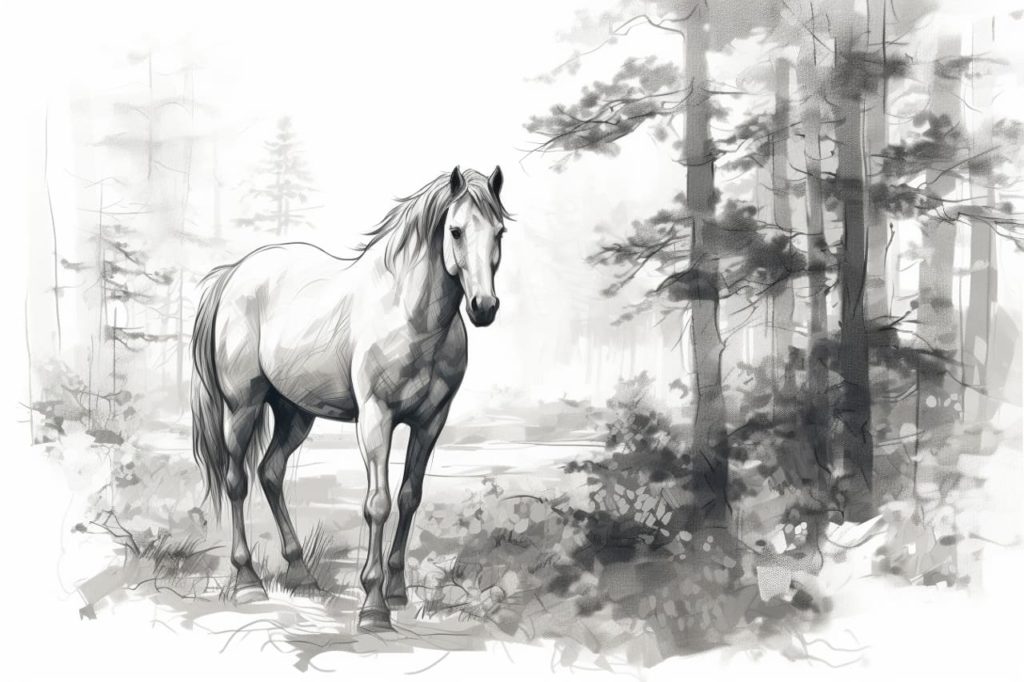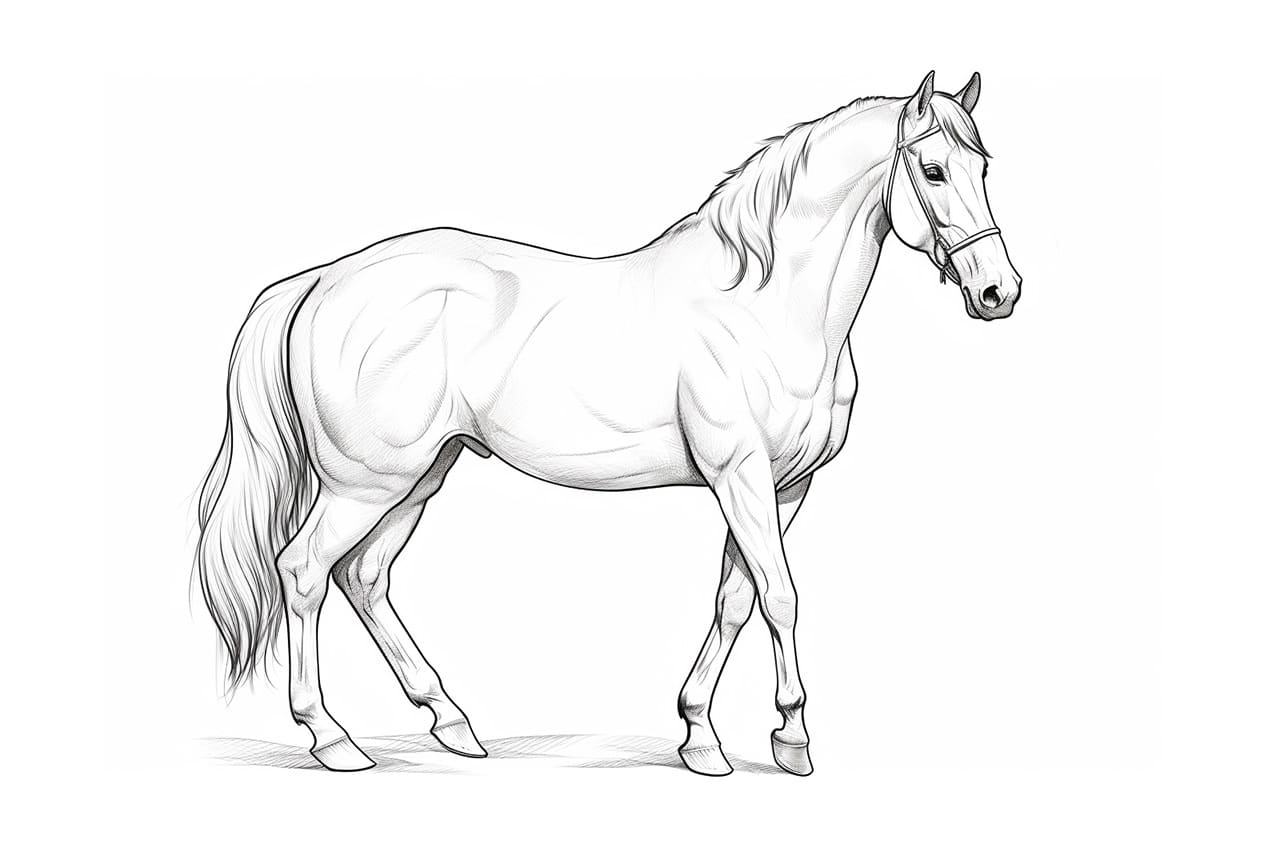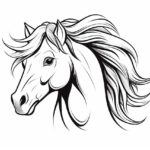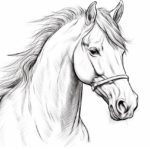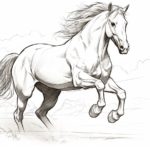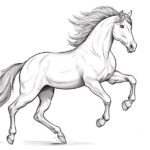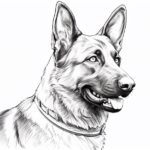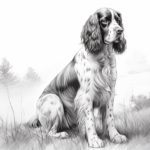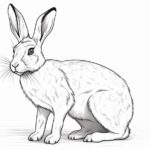Drawing a horse is an exciting artistic endeavor that allows you to capture the grace and beauty of this majestic animal. Horses have been a favorite subject for artists throughout history, and whether you’re a beginner or an experienced artist, learning how to draw a horse can be both rewarding and enjoyable. In this step-by-step guide, we will explore the process of how to draw a horse, breaking it down into easy-to-follow instructions. Let’s saddle up and start drawing!
Materials Required
Before we begin, let’s gather the materials you’ll need:
- Drawing Paper: Select high-quality drawing paper that can withstand your chosen drawing tools without smudging or tearing.
- Pencils: Gather a range of pencils, including H (hard) pencils for light lines and B (soft) pencils for darker lines and shading.
- Eraser: An eraser is essential for making corrections and refining your horse drawing.
- Reference Image: Having a reference image of a horse is highly recommended, as it will help you capture accurate proportions and details.
Now that we’ve assembled our materials, let’s gallop into the world of drawing horses.
Step 1: Basic Shapes
To begin, we’ll establish the foundational shapes of our horse drawing. This step provides a framework for the horse’s body:
- Draw the Head: Start by drawing a circular shape slightly tilted to one side. This circle represents the horse’s head.
- Add the Neck and Torso: Extend a long, curved line from the bottom of the head to create the neck. Then, draw another elongated shape, resembling a rounded rectangle, beneath the neck to represent the horse’s torso.
- Sketch the Legs: For the horse’s legs, draw four vertical lines extending from the torso. These lines will serve as placeholders for the legs’ positions.
Step 2: Refining the Body
Now, let’s refine the horse’s body and add more details:
- Shape the Body: Define the horse’s body by gently curving the lines around the torso and neck. Ensure the curves flow naturally to capture the horse’s elegant form.
- Leg Proportions: Refine the legs by adding more length and shape. Pay attention to the proportions of the legs, as they are crucial for a realistic appearance. Horses have powerful and slender legs, so maintain the balance between strength and grace.
- Hooves and Joints: Add oval shapes at the bottom of each leg to represent the hooves. Then, mark the joints by drawing slight bulges where the legs bend.
Step 3: Head and Mane
Let’s focus on the horse’s head and mane to infuse character into our drawing:
- Define the Head: Refine the shape of the horse’s head by smoothing out any rough edges. Pay close attention to the proportions of the eyes, nose, and mouth. Horses have expressive eyes and distinctive noses.
- Ears and Mane: Sketch the ears on top of the head as pointed shapes. Next, draw the flowing mane, adding wavy lines that fall gracefully along the neck. The mane is an excellent opportunity to add movement and character to your horse.
Step 4: Tail and Details
Continue to refine the drawing and add finer details:
- Graceful Tail: Draw the horse’s tail, which can be long and flowing. Use curved lines to create a sense of movement and grace.
- Facial Features: Add the eyes, nostrils, and mouth with precision. Horses have expressive eyes, so take your time to capture their beauty.
- Muscle Definition: Enhance the horse’s muscular definition by adding subtle lines along the legs and body. This will give your drawing a sense of strength and vitality.
Step 5: Shading and Texture
The final step is to add shading and texture to give your horse drawing depth and realism:
- Shading: Use your pencils to shade areas where shadows naturally fall, such as beneath the neck, belly, and legs. Pay attention to the direction of light to create a three-dimensional effect.
- Texture: Add texture to the horse’s coat by using short, curved lines. Horses have fine fur that can vary in patterns and thickness, so observe your reference image for guidance.
Conclusion
Congratulations, you’ve learned how to draw a horse! Whether you’ve created a majestic stallion or a gentle mare, learning how to draw a horse is a skill that allows you to appreciate the beauty and strength of these magnificent creatures. Remember, practice is key to improving your horse-drawing skills, so keep honing your craft and exploring different horse breeds and poses. Happy drawing!
Gallery of Horse Drawings
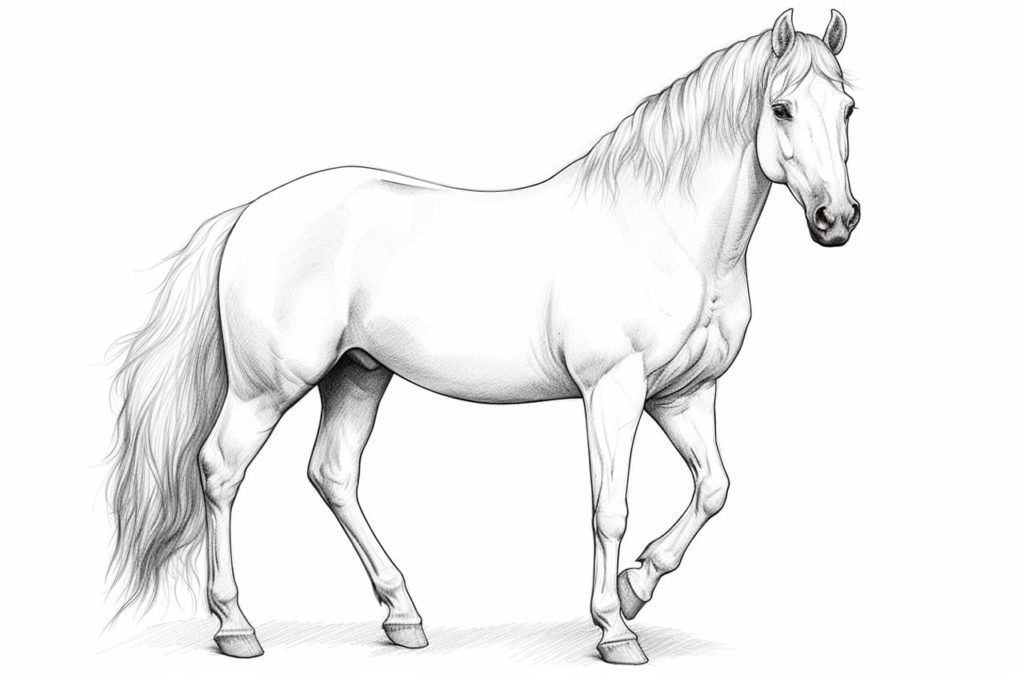
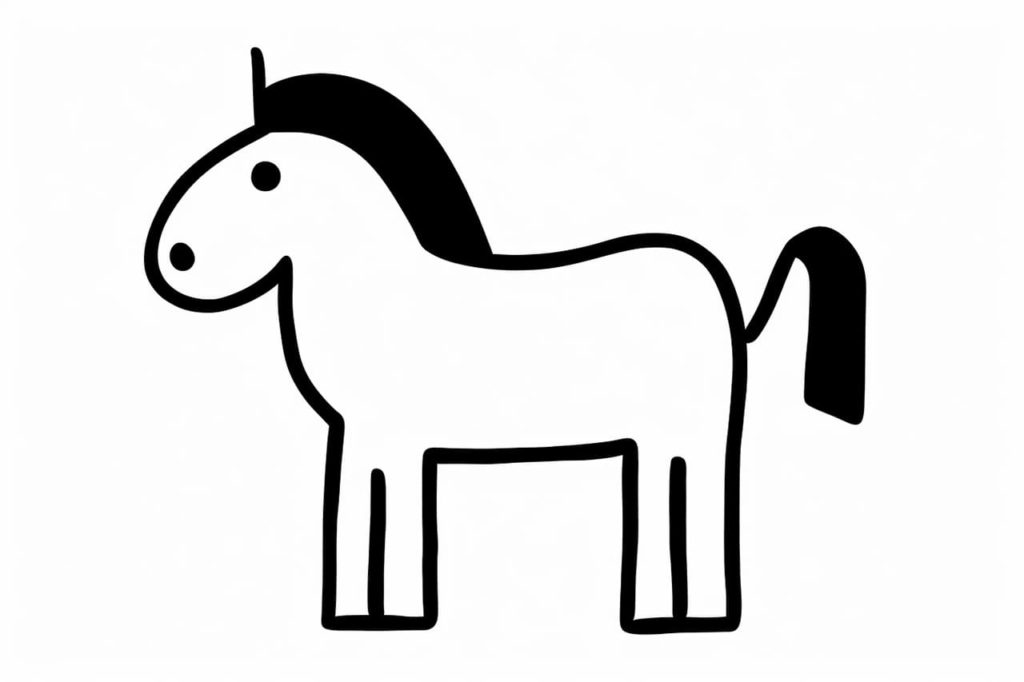
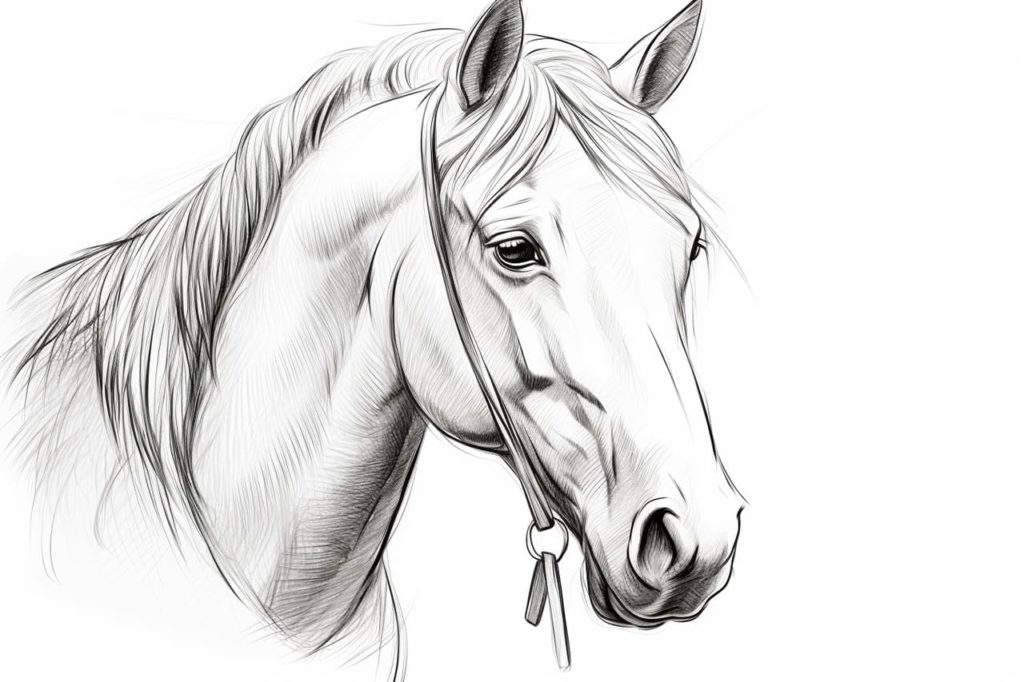
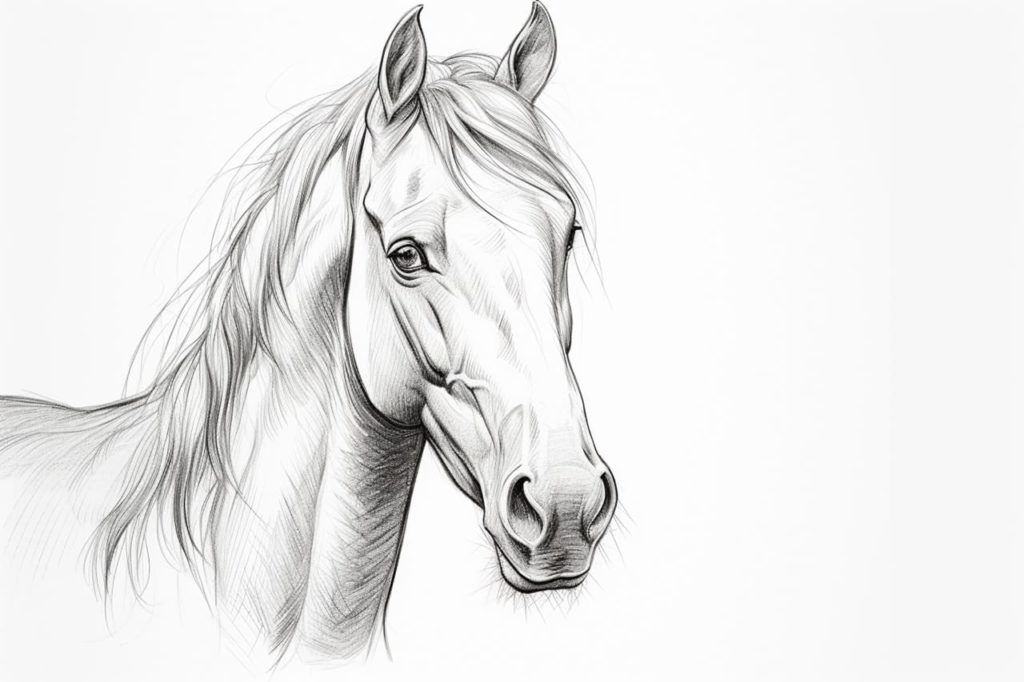
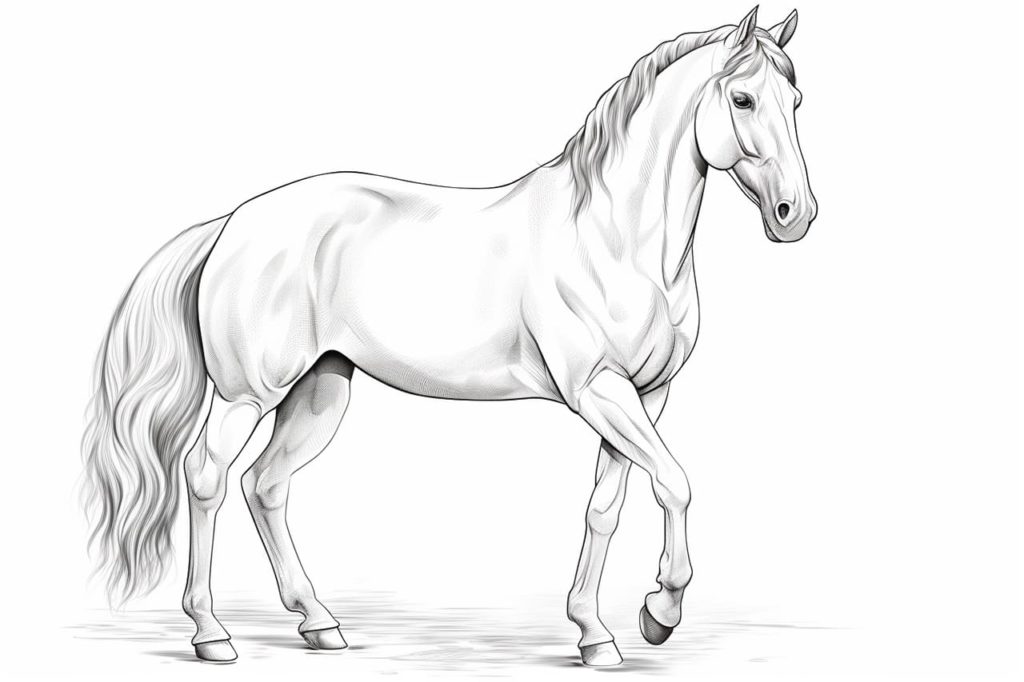
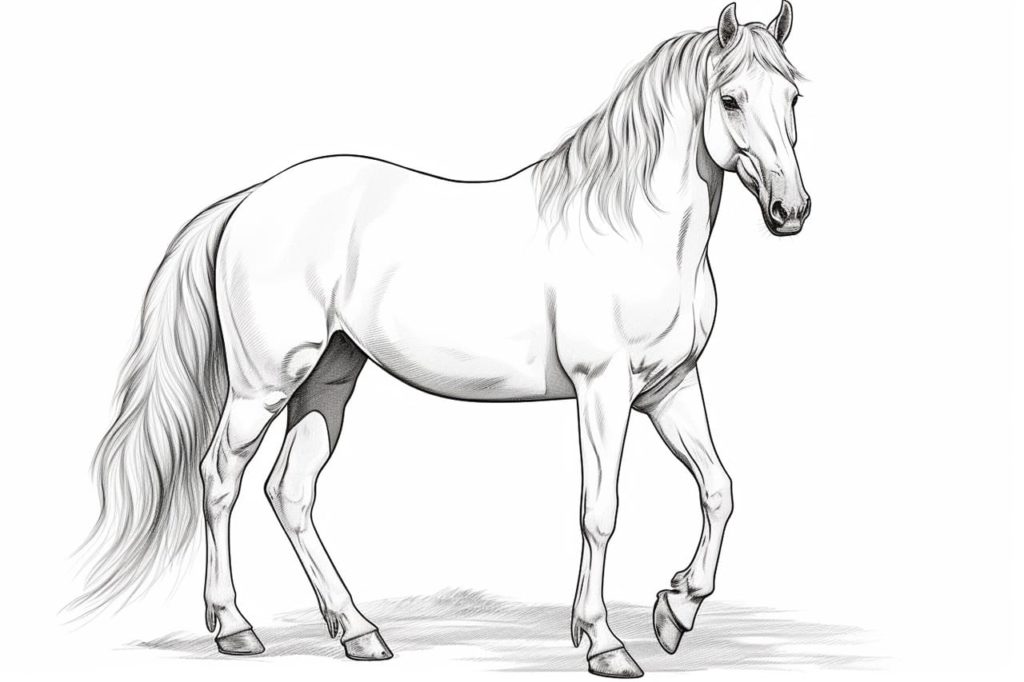
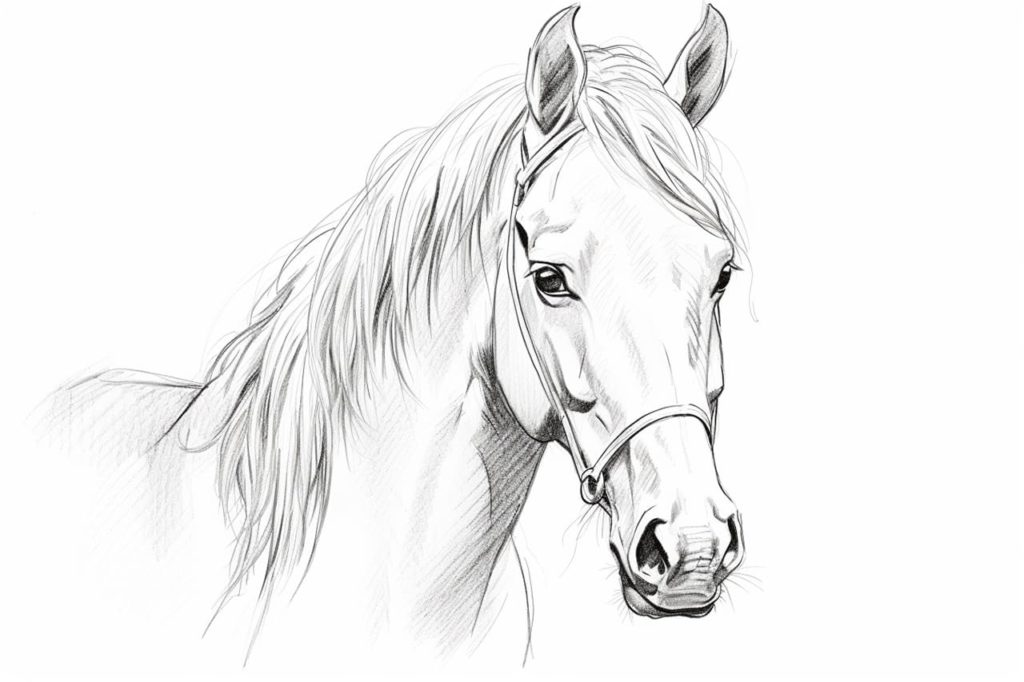
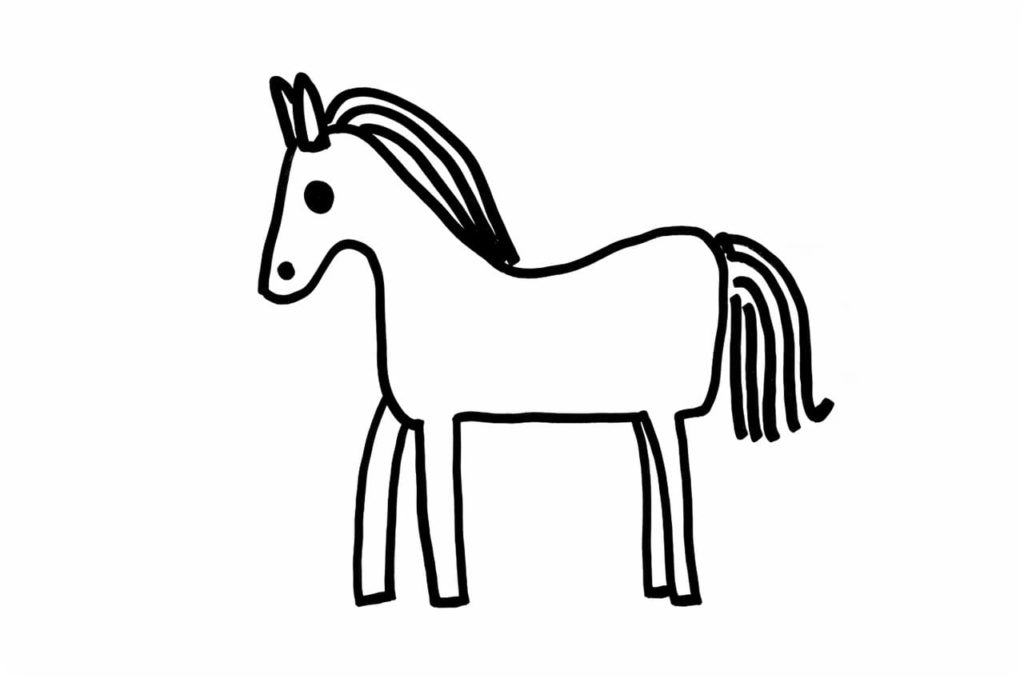
Suggestions of Scenes and Settings for Horse Drawings
- Majestic Gallop: A horse running freely across an open field, mane and tail flowing in the wind, embodying the essence of freedom and power.
- Mountain Trail: A horse navigating narrow mountain trails, with stunning vistas of valleys and peaks in the background, showcasing endurance and agility.
- Beach Sunset: A horse walking along the shoreline at sunset, with waves gently breaking at its hooves and the sky painted in vibrant colors.
- Rustic Barn Setting: A horse peering out from a stable door, with hay bales, rustic tools, and a peaceful farm landscape in the background.
- Equestrian Event: A horse and rider performing in a dressage competition or jumping over hurdles, capturing the grace and discipline of equestrian sports.
- Forest Encounter: A wild horse standing in a dense forest, with light filtering through the trees, creating a mystical and serene atmosphere.
- Winter Wonderland: A horse in a snowy field, with snowflakes clinging to its fur and breath visible in the cold air, contrasted against a winter landscape.
- Desert Journey: A horse trekking through desert sands, with dunes, cacti, and a vast, open sky, highlighting the horse’s resilience and strength.
- In the Meadow: A horse grazing peacefully in a lush meadow, surrounded by wildflowers and butterflies, epitomizing tranquility and connection to nature.
- Under the Northern Lights: A horse standing in a snow-covered landscape under the awe-inspiring colors of the Northern Lights, offering a magical and otherworldly scene.
